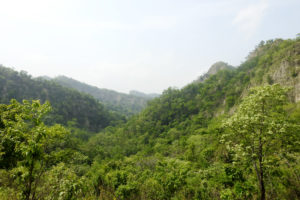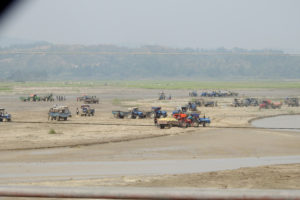
Trijuga Forest, Eastern Nepal
Habitat suitability for tigers is becoming an increasing issue as conservationists and governments are seeing an increase in numbers of wild tigers. Without suitable habitat with abundant prey, good ground cover, water resources and limited human activity, tigers will have limited safe areas into which they can disperse. This can cause conflict, not just with human settlements but also with other tigers.
In Nepal, where conservation is having a positive impact on tiger numbers, some protected areas such as Chitwan National Park are approaching capacity levels. Animals from these source sites need to establish new territories in order to breed and thrive.
Along the lowland forests of Nepal, Himalayan Nature has recently carried out a habitat suitability assessment for tigers in Trijuga Forest, Eastern Nepal, an area for potential tiger settlement. However, the impact of human population expansion in this area makes stark reading and shows how, even in a country that values its wildlife, the stakes are high for tiger recovery.
Out of 442km2 only an area of 97.88km2 was found to be suitable for tigers. Illegal hunting and other disturbances were found to be high. Instant reintroduction of tigers would not be possible. Long term, comprehensive studies, restoration of the forest and corridor, increased population of existing prey species, introduction of large ungulates like Sambar Deer and mitigation of poaching and other human disturbance would be critical for this landscape to be suitable.
As a result of this study, Himalayan Nature will recommend strongly to the Government of Nepal to declare the forest a Protected Area for the reintroduction of the tiger and its principal prey species in eastern Nepal.


